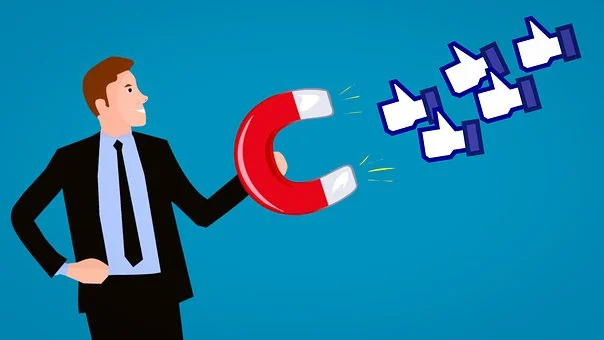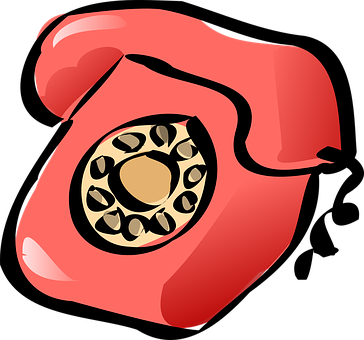Have you noticed how easy it is for marketing teams to become mechanical? Come in, send out a bunch of emails, make a couple of calls, check social media, then compile an activity report and go home.
But B2B lead generation is more than a flurry of activity that shows how much effort you’ve put into chasing a bunch of leads. It’s about identifying a winning combination of tactics that positively showcases your unique selling points and encourages engagement.
Today, we explore some of these winning tactics that may help convert those tons of leads into actual customers.
1. Create Lead Magnets

“Free stuff” comes to mind when you think about lead magnets.
It’s true that marketers share resources with audiences hoping to secure these audiences’ contact information, but that shouldn’t casualize what you share.
Your lead magnet needs to showcase your expertise and relevance and be useful to your audience’s situation.
Here are examples that may help generate high-quality leads:
- Case studies. Key questions at the back of buyers’ minds include, “Is this vendor as good as they claim to be? Do their products/services really work?” Case studies back you up by sharing detailed information about past customers’ pain points, their experience with your solutions, and the results they enjoyed.
- Industry reports. Buyers trust data far more than the verbal claims you may make. Industry reports may help add credibility to your insights about the problem they are experiencing and how you can solve it.
- Resource guides. This is one of the easiest lead magnets you can create since it comprises already published blog posts or videos. So, rather than have your prospects research related topics separately, you put them together in one guide to make things easier.
- Request quote: Perfect for prospects who are ready to make purchases. Request quote requires users to fill a form with their contact details to obtain price quotations.
2. Segment Your Audiences

We often associate segmentation with email marketing, but segmentation is applicable in just about every strategy we use.
Segmentation allows you to identify common traits among audience segments to help you connect better and zero in on their specific needs. Without it, you’re unlikely to deal with the triggers or drivers that inspire prospects to act.
It also helps you pick up high-value customers and may even be useful in product development, upgrades, and cross-sells.
Here are segmentation types worth considering:
- Firmographics. Location, industry, revenue, and company size are common firmographics marketers use to segment organizations. While individual companies in a specific industry may differ in several ways, they typically experience similar problems, which makes this segmentation useful.
- Customer needs. Here you group customers based on their need for specific products/services. The method is subjective and focuses on buying motivations, allowing you to create campaigns that target productivity or budgetary needs.
- Behavior-based segmentation. This approach considers the content your prospects interact with, the channels they visit you through, and the tech they use. It offers clear insights into what they want.
- Tiering or profitability segmentation. With this method, you’ll be looking at the prospect’s potential value to make resource allocation and focus easier. Once you’ve grouped your top targets profitability-wise, you can segment the rest using any of the other methods mentioned above.
3. Create Podcasts

Think about this: up to 74 percent of podcast listeners tune in because they want to learn new things. Further, about 22 percent of US listeners (over 12) listen to podcasts every week.
If you’re willing to put out high-quality educational content people and decision-makers are willing to listen. And listen they will, practically anywhere—at the office, home, the gym, and on long commutes or flights.
To bump your leads, consider the following:
- Host industry experts. People love the opinions or insights thought leaders share, so hosting interviews with these experts may grow your listeners and the number of downloads. Take the time to promote the expert you intend to host to boost awareness.
- Make guest appearances on relevant podcasts. You’re an expert capable of offering valuable insights on various matters. Making guest appearances on podcasts within your industry or related industries improves your credibility, and may boost traffic or open opportunities to tap into.
- Create content from the episodes. Choose key takeaways from individual episodes, and create social media posts, email, or blog posts that delve deeper into them. Remember to add a link to the specific episode and share your content on relevant distribution channels.
4. Make Cold Calls

Given the economic downturn, most businesses are experiencing, the key concern for most buyers is, “Does this product/service make (financial/operational) sense for me?”
Cold calling accords you the opportunity to engage the prospect directly and answer this lingering question upfront. It allows you to give your prospects that reason and nudge them to move forward.
How you engage this strategy depends on your organization. Many businesses find the cost of hiring and managing SDRs in-house expensive and prefer to outsource this service. Should you keep things in-house consider the following:
- Identify key decision-makers. As you formulate your calling list, be sure to identify key decision-makers within those companies. These will be people with buying power and likely to close business deals.
- Research the prospect. Research reveals insights that may help you move from the usual telemarketer position to a professional consultant. The information you uncover may help you tailor pitches that resonate with the business’ needs and the contact person’s personality.
- Perfect your pitch. Keep in mind that the listener is interested in knowing how you can improve their current situation more than the company you represent. That will come later. Your conversation starter needs to include a compelling benefit that pulls in the prospect.
- Track your efforts. Track your calling efforts to see if it’s bringing in the ROI you had anticipated. You will know what to capitalize on and areas that need improvement.
5. Use Interactive Content

Today’s online users click, tap or swipe to find information quickly. They look for content that’s not just high-quality but also instantly appealing and engages them.
Okay, how will interactive content aid lead generation?
Say you walk into a physical store looking to buy cookies, but there’s no one to assist you, won’t you walk away? What if, in that store was a little game that asked a few questions to direct you to your favorite cookies? Wouldn’t you like that?
Interactive content is a friendly way of collecting information while imparting useful or educational information.
It holds the user’s attention by engaging their creative side and making interactions fun compared to the humdrum that is B2B content.
Users, for example, may find interactive calculators providing real-time cost implications of their upcoming projects more useful than articles that merely talk about them.
From these interactions, you can discern needs, preferences, and even search behavior to help you craft spot-on messages.
The best part is that there are interactive content types for every stage.
At the awareness level, you can offer quizzes and assessments, interactive emails/newsletters, blogs, and ebooks. Hook prospects at the consideration stage with interactive calculators, infographics, recommended quizzes, videos, and webinars.
Those at the decision-making stage could use interactive ROI calculators, cost calculators, interactive case studies, or competitor comparison quizzes.



















![TamilMV Proxy List Top 30+ [Unblock TamilMV Sites] TamilMV Proxy Unblock](https://technewsgather.com/wp-content/uploads/2023/04/17825836_SL-121019-25870-14-1-100x70.jpg)